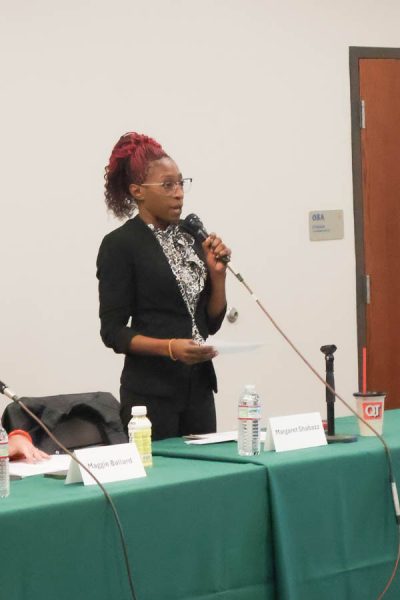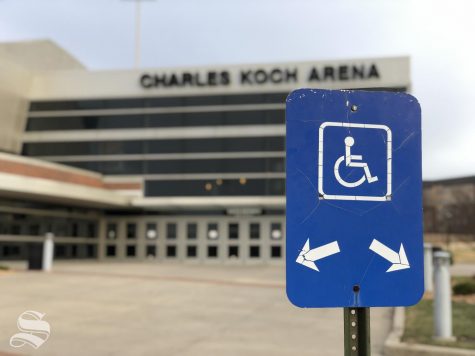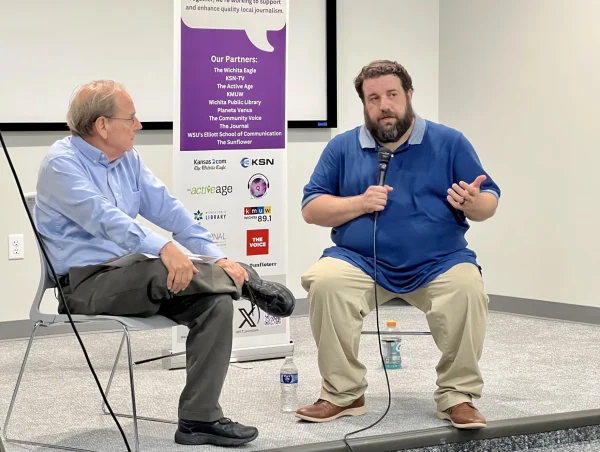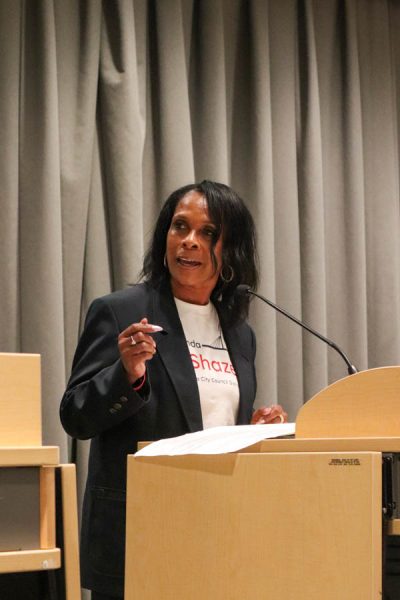If a robot’s heart could break: Shockanator fails to contend at Mercury Robot Challenge
At the end of the day, Wichita State’s robotics team found themselves facing one obstacle at the Mercury Robot Challenge they weren’t prepared to overcome.
The event was an international contest for collegiate robotics teams, which began Saturday, on the campus of Oklahoma State University campus. For the WSU engineering students involved, however – a coalition of members from WSU’s Association for Computing Machinery (ACM) and Institute of Electrical and Electronics Engineering (IEEE) chapters — the challenge began last fall.
Much of their early effort went into building the right team, which went to work designing, building, testing and modifying the diminutive robot they’d later dub “Shockanator.”
Through frequent refinement and redesign, the team created several working prototypes, only to tear them apart and start over — a pile of circuit boards, relays, infrared and ultrasonic sensors, cameras, DC motors, servos, a power system — even a laser — everything custom-made.
“What we’re really going for here are moxie-points,” said senior Rich Staubin, vice president of ACM. “Our robot has to not only navigate a maze, pick up a ball, go over a bridge, drop off a ball and go through some weird little swirly section, but there’s also a 45-foot straightaway. They put the robots through their paces.”
This was the first year for WSU engineering students to participate in the Mercury Challenge. Originally, there were three WSU teams planning to compete, but they merged into one.
The team invested countless hours in the labs at Wallace Hall. About 20 students altogether participated in the project, but there were four core members besides Staubin who made the trip to OSU: freshman Kalvik Jakkala; graduate student and ACM treasurer Nidhi Sathyanarayana; and senior Christian Kindel.
The team was stoked when they rolled into Oklahoma Saturday. They worked on Shockanator up to the last minute, implementing small innovations as they went. As far as they could tell, everything worked perfectly up until Shockanator took its place at the starting line.
The team was ready — the black-and-yellow robot was ready to go — except it couldn’t connect to the Wi-Fi. The main point of the competition was to make a remotely operated robot, but instead, forcing them to give up. The heartbreaking development put the WSU team into overdrive.
The Mercury Challenge officials bumped Shockanator from the beginning of the contest to a later start, giving the team several hours to diagnose the problem.
“We went through every line of code and did everything we could think of,” Staubin said. “For two semesters we were beating on this thing all the way until the last minute, and there we were, on the start-line, and it just would not connect.”
Only the morning after the competition did Staubin realize what went wrong. The night before the event, Shockanator’s network adapter broke, so they installed a new one. What they forgot about was to reset the MAC address — the 12-digit code that identifies hardware to the Wi-Fi network, a code they’d registered with the competition months before.
“All the best laid plans of mice and men, and it came down to one tiny detail,” Staubin said. “The complexity of the system is massive. It’s a huge, huge project. There are millions of details, and this one was all it took.”
Unfortunately, the Shockanator wasn’t alone in its starting-line blues. Almost a third of the competitors had trouble before they ever started. A few were disqualified for intermittent connections and a few more because they couldn’t control their machine — only about 10 of the robots were actually able to compete. One even competed a little too hard, Staubin said, running out of control over the course’s walls to terrorize the track.
Today, the WSU robotics team is licking its wounds, but none of them counted the effort as a loss. A few days before the event, Kindel said he knew that anything could happen once they put Shockanator into the field.
“We might not be entirely prepared once we get there, but it’ll be fun,” he said. “This has been a practical experience however it turns out.”
Staubin will be leaving WSU soon, but he’s confident that this won’t be the last ride for Shockanator.
“They invited our team to organize our own robot challenge at Wichita State,” Staubin said. “So who knows — maybe next year the Mercury Robot Challenge will happen someplace fun, like Beggs Hall. Maybe even the Innovation Campus.”
He’s not ruling out a guest appearance at spring commencement, either, or pitching Shockanator as a sidekick for WuShock.
“The competition itself was great,” Staubin said. “We’re trying not to beat ourselves up about it. We got to the start-line and we couldn’t connect, but it was definitely amazing.”







